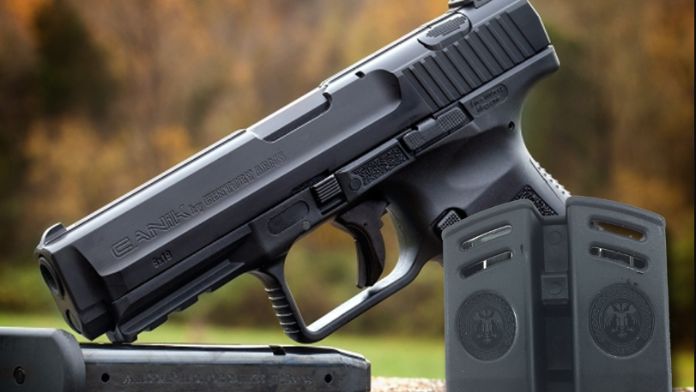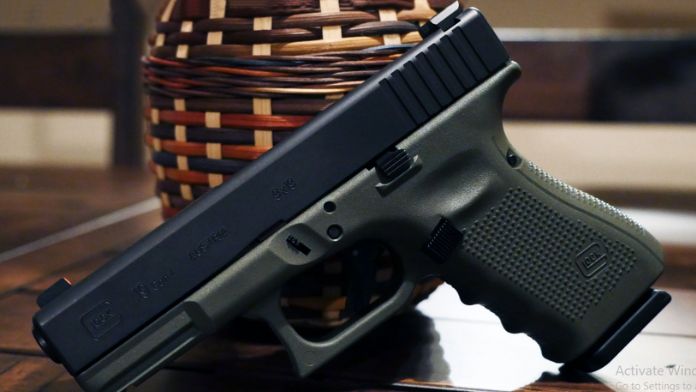In the world of handguns, precision and accuracy are paramount. Shooting enthusiasts and professionals alike often engage in the age-old debate about which firearm boasts superior accuracy and reliability. One key factor that contributes to a handgun’s accuracy is its trigger pull weight. In this blog post, we’ll delve into the intricacies of the Glock 19 Gen 4 trigger pull weight and its impact on accuracy. We’ll also explore related topics such as building a SIG P320 FCU, the Glock 45 vs SIG P320 debate, SIG P320 Compact vs P365XL, and address concerns like SIG P320 AXG Scorpion problems and firing out of battery.
The Basis Of Trigger Pull Weight
Before we dive into the specifics of the SIG P320, let’s establish a foundational understanding of trigger pull weight. Simply put, trigger pull weight refers to the force needed to pull the trigger and discharge a round. It’s measured in pounds and can significantly influence a shooter’s accuracy and overall experience with a handgun.
Now that we’re on the same page about trigger pulls weight let’s explore how it impacts accuracy and why it’s a crucial consideration for firearm enthusiasts.
Impact on Accuracy
Consistency is Key
The trigger pull weight plays a pivotal role in achieving consistent shot placement. A consistent trigger pull weight ensures that each shot requires the same amount of force, reducing the chances of jerking or pulling the gun off target. This consistency is particularly important for precision shooting, where minor deviations can result in missed shots.
Balancing Act: Light vs. Heavy Trigger Pull
Finding the right balance between a light and heavy trigger pull is essential. A lighter trigger pull is often favored for precision shooting as it allows for smoother and more controlled squeezes. On the other hand, a weightier trigger pull can add an extra layer of safety, reducing the likelihood of accidental discharges.
Now that we understand how Glock trigger pull weight affects accuracy, let’s examine the SIG P320 and its unique characteristics.
SIG P320 Overview
Building a SIG P320 FCU:
The heart of the SIG P320 lies in its Fire Control Unit (FCU). Building a SIG P320 FCU (Fire Control Unit) allows enthusiasts to customize their handguns to meet their specific preferences. This modular design enables users to choose their frame, slide, and grip, creating a personalized firearm tailored to their needs.
As we explore the customization options for the SIG P320, let’s compare it to another popular handgun – the Glock 45.
Glock 45 vs SIG P320
Trigger Pull Showdown: Glock vs. SIG:
The Glock 45 and SIG P320 are revered in the firearms community, each with its own strengths. When it comes to trigger pull, the Glock 45 typically features a consistent and slightly heavier pull. In contrast, the SIG P320 is known for its modular design, permitting users to customize the trigger pull weight to their liking.
Now, let’s dissect the SIG P320 further by comparing its compact variant to the P365XL.
SIG P320 Compact vs P365XL
Size Matters: Compact vs. Subcompact:

The choice between the SIG P320 Compact and P365XL often boils down to personal preferences and use cases. The Compact is a bit larger, offering a more substantial grip and potentially a more comfortable shooting experience for some users. However, the P365XL’s smaller frame makes it ideal for concealed carry, sacrificing some grip size for enhanced portability.
While the SIG P320 offers customization options, like any firearm, it may have its own set of issues. Let’s address concerns about the SIG P320 AXG Scorpion and firing out-of-battery incidents.
SIG P320 AXG Scorpion Problems and Firing Out of Battery
Addressing Concerns: AXG Scorpion and Out of Battery Incidents
The SIG P320 AXG Scorpion, with its aluminum grip module, is praised for its aesthetics and durability. However, like any mechanical device, it may have its share of reported problems. Users have occasionally raised concerns about potential issues with the AXG Scorpion grip module, emphasizing the importance of regular maintenance and thorough testing.
Firing out of battery incidents, where the gun discharges a round before the slide is fully closed, are rare but serious occurrences. Proper maintenance, quality ammunition, and following safety guidelines can mitigate the risk of such incidents.
Now that we’ve covered potential concerns let’s return to the central theme of trigger pull weight and its impact on accuracy.
Glock 19 Trigger Pull Weight and Lighter Trigger Pull
Comparing Trigger Pull: Glock 19 Gen 4

The Glock 19 is a staple in the firearms community, known for its reliability and versatility. The Gen 4 model, in particular, has a trigger pull weight normally ranging from 5.5 to 7.5 pounds. Some shooters prefer a lighter trigger pull for improved control and accuracy, leading them to explore aftermarket modifications to achieve a smoother and lighter trigger.
As we wrap up our exploration of trigger pull weight, let’s recap the key points and emphasize their significance in the overall shooting experience.
Conclusion
In the world of handguns, accuracy is an art form, and trigger pull weight is the brushstroke that can make or break the masterpiece. The SIG P320, with its modular design and customizable options, allows users to tailor their shooting experience to perfection. Whether opting for a lighter trigger pull for precision shooting or a slightly heavier one for added safety, understanding the nuances of trigger pull weight is essential.
As we navigate through the intricacies of build a Sig P320 fcu, compare it to the Glock 45, explore the differences between the SIG P320 Compact and P365XL, and address concerns about the SIG P320 AXG Scorpion and best 357 ammo firing out of battery incidents, the central theme remains clear – trigger pull weight matters.
So, whether you’re a seasoned shooter or a novice exploring the world of handguns, consider the impact of trigger pull weight on accuracy. It’s not just a technical specification; it’s the secret ingredient that can elevate your shooting experience to new heights. As you embark on your journey to master the art of precision, remember that the trigger pull weight is your ally in hitting the bullseye and achieving that perfect shot.

